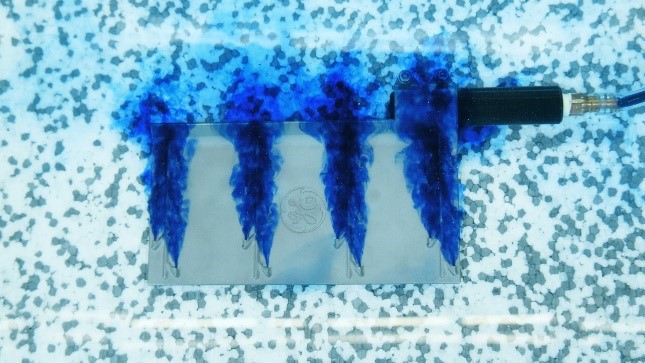After sport, food is the second thing that can bring people from different backgrounds closer together. And when it comes to food, there is nothing like the “Oktoberfest” to emphasize this feeling. The Oktoberfest is an annual festival in Germany, held over a two-week period and ending on the first Sunday in October. During this period, the community celebrates the Munich brewers and their products – This obviously also includes the local dishes.
There are only a few days left to go before the end of this festival. For specialists like GE Additive, it was an interesting opportunity to explore the potential of additive manufacturing in the brewing sector.
A few examples of applications in this niche market include a range of tools optimized by Heineken to improve beer production and a faucet 3D printed by New Agorist. The CEC Munich team of GE Additive approached Bamberg-based Kaspar Schulz GmbH to explore the use of additive manufacturing in their work. This wasn’t GE Additive’s first experience in this sector. For Kaspar Schulz on the other hand, it was a tangible experience with additive manufacturing.
Speaking of this collaboration, Jörg Binkert, head of Research & Development at Kaspar Schulz GmbH declared: “we were very pleased that GE Additive approached us. We were already familiar with 3D modelling and making designs with CAD, but additive manufacturing was something new for us. But once we started looking, it didn’t take us long to find a couple of good applications that could really be improved by using additive technology.”
Speaking of this collaboration, Matthew Beaumont, GE Additive’s CEC Munich site leader, explained that they focused on two parts that’ve proven benefits in using additive manufacturing over traditional machining: the access door knob and the racking blade design.
For the access door knob, Kaspar Schulz currently mills the part out of a block of stainless steel. This is something that we see regularly in aircraft manufacturing, but it was a surprise to see it in use here, too.
“Using additive, we were able demonstrate savings in terms of material use, manufacturing time and include the possibility to customize the part with their company logo – at no additional cost or effort. The racking blade design, however, was a chance for us to really show the freedom of design that additive allows. At our first meeting, Mr. Binkert showed us some sketches of ideas that he had for improvements to the current racking arm for the lauter tun. His goal was to improve the filtration effect of the spent grain bed in the vessel in order to rinse it more thoroughly in order to save time and make it more efficient”, explained Beaumont.
“Time” was the main challenge encountered during the project
Amazement was definitely part of this experience for both teams. While the CEC Munich team was impressed by Kaspar’s expertise in the field of brewing, malting and distilling, they also had to take advantage of their expertise in the aerospace industries to achieve their mission in the brewing application.
“As with any new product development, time is always a challenge. We set the goal of achieving a first design in time for this year’s Oktoberfest, and we were able to do simulation analysis, complete the design, and perform basic functional tests before now.
What still lies ahead of us, though, is the final use verification in the complete brewing process. We want to verify the benefit in via chemical analysis of an actual batch of wort – and of course a taste test by the project team”, said Beaumont in an interview.
With this example, GE Additive has shared a blatant example of the wins that additive can offer without a massive change to the machinery. More importantly, we couldn’t agree more with Beaumont who believes that in the brewage industry, the use of AM can have an evolutionary effect as opposed to the “revolutionary effect” often portrayed in media.
You can now post free of charge job opportunities in the AM Industry on 3D ADEPT Media. For further information about 3D Printing, follow us on our social networks and subscribe to our newsletter : Facebook, Twitter, LinkedIn & Instagram !Would you like to be featured in the next issue of our digital magazine? Send us an email at contact@3dadept.com






